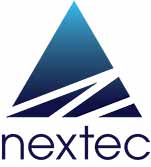Divesting for Growth
18/03/15 Filed in: Insights
For every organisation prioritising the allocation of resources is an ongoing challenge. Sometimes a review of assets indicates that not only could that asset be worth more in another business but that the resources released can generate greater growth and value when redirected to other initiatives.
Maintaining Focus
Any diversified business adds a layer of complexity and management overhead which can hamper optimising performance. Removing or reducing that complexity can deliver improved performance that is rewarded by the capital markets, both for that improvement and the expectation that the tighter focus will allow for additional sharpening of performance.
Achieving an optimal outcome
Companies looking to maximise the outcome from divesting unwanted businesses have three options to decide between: a trade-sale, a spin-off or a carve-out. Making that choice is complicated by financial market considerations - timing, appetite and preference, the market environment for acquisitions and the willingness of acquirers to allow the vendor to retain a shareholding.
Understanding and evaluating each of these paths may require a significant investment in time and effort. The assistance of corporate advisors with the appropriate experience and understanding can both accelerate that process and ensure that management attention remains focused on its core activities.
Financial markets tend to reward highly leveraged businesses which divest operations that are non-core. As business environments change over time the original rationale for acquiring or developing those businesses may fade. A shift in market structure, macro-economic conditions or regulatory environment can spur a refocus onto the operating performance of the core business. Public market investors often apply a conglomerate discount to diversified enterprises which can exceed 13%. For high performing conglomerates this drives a continual review of operations so as to ensure resources are optimally allocated.
Research undertaken by The Boston Consulting Group indicates that companies which actively divest to retain focus are rewarded by a 40% increase in their EBITDA multiple.
Choosing the right option
Deciding on the right path to exit a business requires consideration of many factors, including the desire for a capital release, timeframe for divestment, strategic considerations and the state of capital markets.
In a strong IPO environment a spin-off or carve-out (where the vendor retains a stake in the new public company) may generate the strongest financial result. Good performance from the new entity can see strong growth in its value that provides shareholders with an enhanced stake from their holdings in the parent and spun-out entity.
However, in many cases the appeal of a trade-sale can be very compelling. The cash generated can allow a vendor to pay down debt, make fresh investments or acquire other businesses. The process may be simpler, faster and lower-risk than an IPO. In times of high volatility in the capital markets or when there is a disruption in an industry structure the trade sale can provide a clean path to achieving liquidity in an unwanted business. Acquirers may be willing to make further investment in the business where the capital markets prefer a more established financial performance history. This is particularly true in capital markets of limited depth.
Similarly, the earnings multiple benefit that accrues to highly leveraged vendors rewards the complete disposal from a trade-sale over the spin-off.
The decision process is further complicated by tax considerations, which can lead to investors preferring spin-offs over trade-sales, where the proceeds may be subject to corporate taxes.
Choosing the right path to divestment requires careful consideration of a range of strategic, financial, commercial and market factors. We enjoy working with clients for whom we can help to ensure an optimal outcome.
Author: Peter M. Hall
